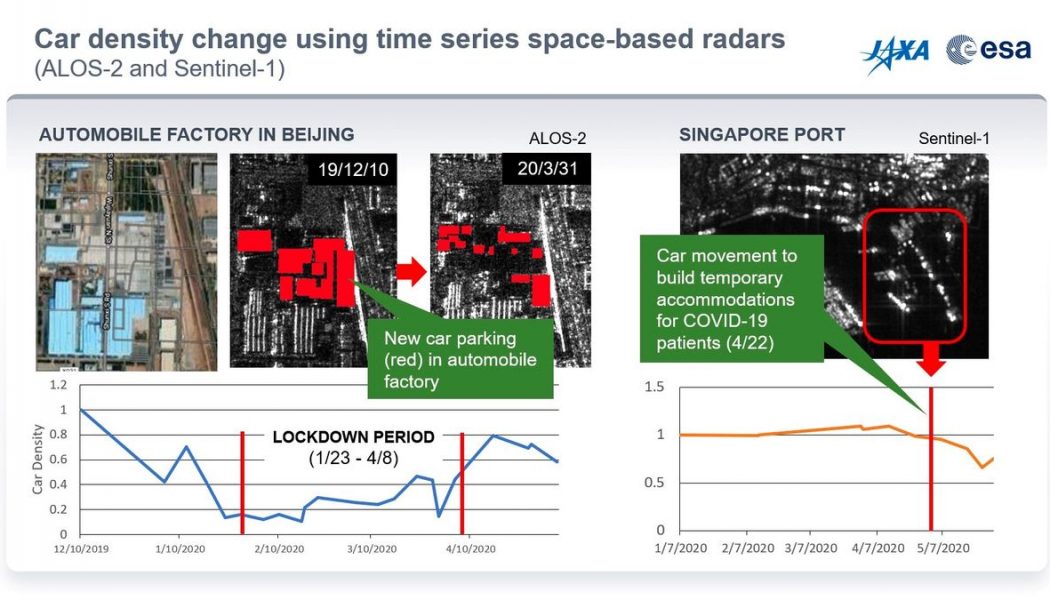NASA, the European Space Agency (ESA), and the Japan Aerospace Exploration Agency (JAXA) are keeping track of how COVID-19 has changed the economy and environment. The three space agencies brought together satellite observations to create a new dashboard that was unveiled today.
The COVID-19 Earth Observation Dashboard lets users explore how the ongoing pandemic has affected airport and shipping traffic, city night lights, and agricultural production in locations across the world. It also includes data on greenhouse gases, air quality, and water quality.
“The pandemic was not only leaving a staggering toll of human suffering. It was having a global impact that we could document from space,” Thomas Zurbuchen, associate administrator of NASA’s Science Mission Directorate, said in a video released with the dashboard. “Our three space agencies realized that if we could combine forces, we could bring a more powerful set of analytical tools to bear on this fast-moving crisis.”
JAXA’s satellite ALOS-2 and ESA’s satellite Sentinel-1 observed the density of newly made cars parked at a factory near the Beijing Capital International Airport. Charts on the dashboard show how the density of brand-new cars parked there plummeted between December 2019 and February 2020 following the emergence of the new coronavirus in China. Satellite imagery shows the number of cars being produced rising again in April.
:no_upscale()/cdn.vox-cdn.com/uploads/chorus_asset/file/20052617/SOBUE_1.jpg)
Taking high-resolution images of nighttime lights from space, a NASA-National Oceanic and Atmospheric Administration satellite showed how lights from the San Francisco Medical Center shined brighter than usual in the midst of the coronavirus outbreak between January and April 2020.
:no_upscale()/cdn.vox-cdn.com/uploads/chorus_asset/file/20052627/SOBUE_2.jpg)
NASA and ESA previously released maps documenting the change in nitrogen dioxide polluting the air in China as a result of the pandemic. Skies cleared as factories shut down, planes stayed grounded, and people stopped commuting while quarantining at home. The dashboard now includes changes in nitrogen dioxide — which is released when burning fossil fuels — across the US, Europe, India, and China.
The space agencies’ data shows that the amount of greenhouse gases humans released into the atmosphere also fell as the pandemic slowed down economies. That temporary drop, however, wasn’t significant enough to stop the overall amount of carbon dioxide in the atmosphere from climbing. Carbon dioxide emissions seemed to return to normal in Beijing in April with the end of coronavirus-induced lockdowns, NASA research program manager Ken Jucks said on a press call today. Nitrogen dioxide pollution also rebounded in China, according to Jucks.
The dashboard will continue to be updated with satellite observations as the COVID-19 pandemic continues. “Our teams are exhausted now, but also very proud to have our work presented to a global audience today,” Josef Aschbacher, director of ESA Earth Observation Programmes, said on the call.










